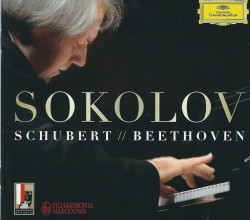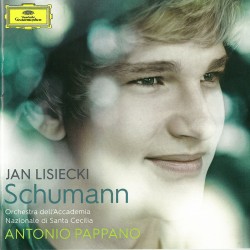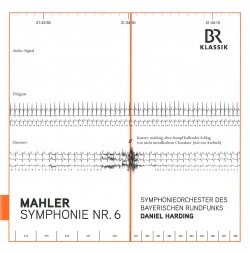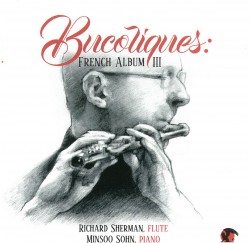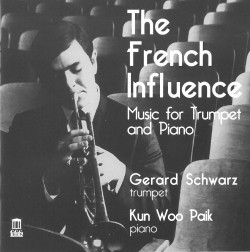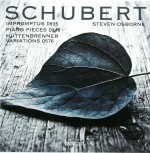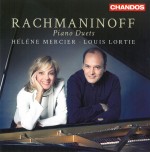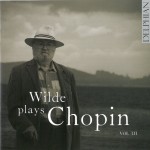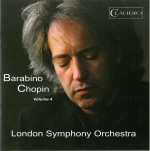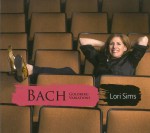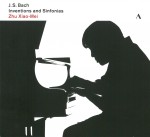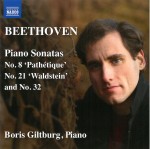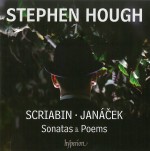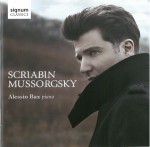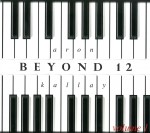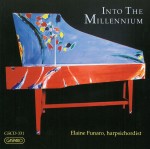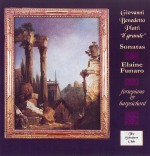Keyed In - March 2016
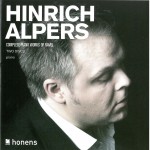 The ambitious Hinrich Alpers Complete Piano Works of Ravel (Honens 201502CD) will have been several years in preparation before its extensive recording sessions at The Banff Centre in 2015. There’s so much that’s superb about this recording and virtually no space in this column to say even a fraction of it. We’ll settle then, for some praise lavished on a few of the many exceptional tracks.
The ambitious Hinrich Alpers Complete Piano Works of Ravel (Honens 201502CD) will have been several years in preparation before its extensive recording sessions at The Banff Centre in 2015. There’s so much that’s superb about this recording and virtually no space in this column to say even a fraction of it. We’ll settle then, for some praise lavished on a few of the many exceptional tracks.
Pavane pour une infant défunte has never been more lovingly played, perched just on the threshold of deep melancholy. Alpers’ touch and tone are impeccable. Oiseaux tristes from Miroirs also benefits from Alpers’ tactile genius at the keyboard where the gentlest of hammer strokes evoke unimaginable bird calls. His Gaspard de la nuit is entirely brilliant but its Ondine is especially fluid and sparkling. In the closing track, Alpers holds nothing back in La Valse and its devastation of the old order.
Six bonus tracks add homages to Ravel by composers like Honegger and Casella. This 2-CD set is a wonderful and complete document for all enthusiastic Ravellians.
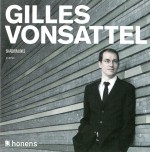 The 2009 laureate takes a very different direction in Gilles Vonsattel, Shadowlines (Honens 201501CD). The central and title work of the recording is George Benjamin’s Shadowlines, around which Vonsattel programs related material. Three Scarlatti sonatas open the CD. They’re crisp, emphatically punctuated and use every performance advantage the modern piano offers. With tonality and rhythm established, the Messiaen Quatre etudes de rythme: No.4 moves sharply toward a new form that along with the Webern Variations Op.27 influenced George Benjamin’s work. Vonsattel thus far proves himself capable of both incisive playing and introspective repose.
The 2009 laureate takes a very different direction in Gilles Vonsattel, Shadowlines (Honens 201501CD). The central and title work of the recording is George Benjamin’s Shadowlines, around which Vonsattel programs related material. Three Scarlatti sonatas open the CD. They’re crisp, emphatically punctuated and use every performance advantage the modern piano offers. With tonality and rhythm established, the Messiaen Quatre etudes de rythme: No.4 moves sharply toward a new form that along with the Webern Variations Op.27 influenced George Benjamin’s work. Vonsattel thus far proves himself capable of both incisive playing and introspective repose.
In Shadowlines, Vonsattel opens beautifully to freer form before returning to Messiaen whose Préludes are a perfect bridge to the closing tracks by Debussy. It’s a very satisfying and well-constructed program that Vonsattel holds together both intellectually and artistically. His particular gift seems to be understanding how best to highlight the stylistic differences of each composer.
He’s an adventurous and intelligent musician who brings obvious rationale to a convincingly expressive keyboard style.
Review
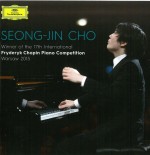 South Korean pianist Seong-Jin Cho won the 17th International Chopin Piano Competition last year, taking top prize after five rounds of competitive performance. 163 pianists began the odyssey that is now the world’s oldest piano competition – six emerged as finalists. Winning this event is a career-making achievement, especially at age 21.
South Korean pianist Seong-Jin Cho won the 17th International Chopin Piano Competition last year, taking top prize after five rounds of competitive performance. 163 pianists began the odyssey that is now the world’s oldest piano competition – six emerged as finalists. Winning this event is a career-making achievement, especially at age 21.
This recording, Seong-Jin Cho – Winner of the 17th International Chopin Piano Competition (Deutsche Grammophon 479 5332) is Cho’s live performance at the Warsaw Philharmonic Concert Hall in October last year. He delivers all the bombast and meets the blazing technical demands of the repertoire with confidence. It’s also a very moving listening experience for its mature approach to the familiar fragilities that Chopin requires. Cho spends critically important fractions of seconds delaying passing notes and dissonances to intensify each moment of uncertainty.
The Préludes Op.28 contain a universe of emotions beautifully portrayed with complete conviction. The Piano Sonata No.2 in B-flat Minor Op.35 demonstrates Cho’s command of Chopin’s rich vocabulary. This is particularly evident in his treatment of the third movement’s central passage where the simple melody moves slowly, unhurried and with minimal accompaniment. Cho lingers courageously creating a powerful contrast to the gravity of the surrounding Marche funèbre.
The recording ends appropriately with the Polonaise in A-flat Major Op.53 (Polonaise héroïque) upon whose closing chord the audience erupts in cheers and applause.
Review
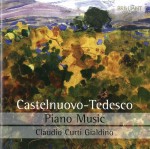 Mario Castelnuovo-Tedesco occupies that sparse region of Italian composers whose works were not principally operatic. Perhaps best known for his guitar and film works, his small body of piano compositions is often overlooked. Claudio Curti Gialdino’s recent disc, Castelnuovo-Tedesco Piano Music (Brilliant Classics 94811) offers a fine example of how this composer blended his own voice with the French and Russian influences of the early 20th century. The repertoire represents the composer’s early work before he fled fascist Italy in 1939, to settle in the US.
Mario Castelnuovo-Tedesco occupies that sparse region of Italian composers whose works were not principally operatic. Perhaps best known for his guitar and film works, his small body of piano compositions is often overlooked. Claudio Curti Gialdino’s recent disc, Castelnuovo-Tedesco Piano Music (Brilliant Classics 94811) offers a fine example of how this composer blended his own voice with the French and Russian influences of the early 20th century. The repertoire represents the composer’s early work before he fled fascist Italy in 1939, to settle in the US.
Alt Wien Op.30 has a strong feel of Ravel’s La Valse about it. While it’s not nearly as deconstructionist, it does share a similar scale and language. The work’s unique feature is the anti-rhythmic way the composer has cast the dances of the opening and closing movements. Gialdino captures this wonderfully by holding back the Waltz and Fox-Trot, never letting them emerge as quite the dances we expect.
Despite its programmatic title, Le danze del Re David Op.37 is a freely impressionistic collection of eight rhythmic caricatures. It’s clever writing and fine playing. Gialdino brings a distinctive bounce to this set that is very appealing. He goes even further in his performance of Piedigrotta Op.32 (Rapsodia napoletana). Here, an underlying sense of Russian grandness supports a series of five colourful vignettes that concludes with some serious keyboard muscle.
Gialdino plays a Kawai in this recording, and I suspect it might be less than full concert size. It’s brightly voiced and delivers the music well.
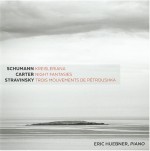 Eric Huebner is a versatile musician with eight recordings to his credit. Many of them are ensemble performances of contemporary music, so it’s a thrill to hear what he does on this new solo CD Eric Huebner Plays Schumann, Carter and Stravinsky (New Focus Recordings FCR159). Huebner’s performance of the Schumann Kreisleriana Op.16 is competent and direct with memorable tenderness flowing through the Sehr langsam movement. It is, however, his playing of three movements from Stravinsky’s Petrouchka that really tempts one to reach for superlatives.
Eric Huebner is a versatile musician with eight recordings to his credit. Many of them are ensemble performances of contemporary music, so it’s a thrill to hear what he does on this new solo CD Eric Huebner Plays Schumann, Carter and Stravinsky (New Focus Recordings FCR159). Huebner’s performance of the Schumann Kreisleriana Op.16 is competent and direct with memorable tenderness flowing through the Sehr langsam movement. It is, however, his playing of three movements from Stravinsky’s Petrouchka that really tempts one to reach for superlatives.
While many pianists begin the Danse Russe at full throttle, Huebner holds back throughout this section and saves his energy for the maniacal marathon of playing required for La semaine grasse. His clarity and endurance are truly impressive. Better still is the intervening movement, Chez Petrouchka, which I have never heard played with such impish energy and mysticism. He uses the silence between notes to powerful effect and adds unexpected hesitations to rests. It’s a brilliant performance.
The recording also includes the rather dense Night Fantasies by Elliott Carter. Huebner is very much at home with this material. It’s unstructured and leaves the performer to create an episodic map that makes interpretive sense for the listener. Its length requires intellectual discipline to sustain interest and Huebner has no difficulty doing this, effectively conveying Carter’s world of half wakefulness in the middle of the night.
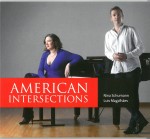 The dynamism of dual piano performance asserts itself powerfully in American Intersections (Two Pianists Records TP1039220). Nina Schumann and Luis Magalhäes have performed together since 1999. Their latest recording seeks to reflect the melting pot of influences that defines American music, Blues, Latin, Ragtime, etc.
The dynamism of dual piano performance asserts itself powerfully in American Intersections (Two Pianists Records TP1039220). Nina Schumann and Luis Magalhäes have performed together since 1999. Their latest recording seeks to reflect the melting pot of influences that defines American music, Blues, Latin, Ragtime, etc.
Souvenirs Op.28 is Samuel Barber’s collection of dances for piano four hands. Schumann and Magalhäes, however, play an arrangement for two pianos and take advantage of the opportunity for the richer performance that this offers. They adhere faithfully to Barber’s strong romantic leaning without neglecting his frequent modernist flirtations.
William Bolcom’s Recuerdos is a three-part set of homages to composers like Nazareth and Gottschalk. The Paseo opens and closes with a sublime Latin-influenced rag that is utterly captivating. But the show-stealer is the final homage to Delgado Palacios, in which the duo brings explosive energy to Bolcom’s Valse Venezolano.
When Leonard Bernstein arranged Copland’s El Salón México for two pianos in 1941, it soon eclipsed the version for single keyboard. This recording of the piece captures every orchestral nuance and turn of phrase. It’s a terrific performance.
Frederic Rzewski echoes the powerful pulse of American industry in Winnsboro Cotton Mill Blues. The pounding episode that opens the piece surrenders to a mildly dissonant blues segment beautifully played, which then blends back into a combined machine-pulsed blues to close the piece.
Hallelujah Junction by John Adams is a complex and difficult piece. Schumann and Magalhäes perform this superbly. There’s a devilishly complex rhythm just before the slower middle section which they handle flawlessly. The work’s relentless drive to its finish seems no challenge at all to this very gifted pair.
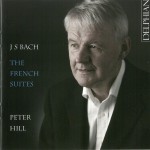 Peter Hill’s latest recording project is JS Bach – The French Suites (Delphian DCD34166). Hill is perhaps best known for his recordings of contemporary repertoire, his books on Stravinsky and Messiaen, and his master classes at major music schools around the world. His recording of the Bach French Suites is, therefore, especially interesting.
Peter Hill’s latest recording project is JS Bach – The French Suites (Delphian DCD34166). Hill is perhaps best known for his recordings of contemporary repertoire, his books on Stravinsky and Messiaen, and his master classes at major music schools around the world. His recording of the Bach French Suites is, therefore, especially interesting.
Hill plays this music with a great deal of affection. While Bach’s pedagogical intent is always clear in the two- and three-voice counterpoint, Hill reaches further to find the beauty in every melodic fragment. He’s not the least shy about using the piano’s expressive potential to colour the main ideas. He’s quite disciplined about the regulated speed at which this baroque repertoire needs to proceed and reserves his subtle ritardandos exclusively for phrase endings. He also makes a practice of lightening up on the touch at the same time. The combined effect of these creates a reverent and respectful closing punctuation. Hill’s ornamental technique is tasteful and well considered. It’s always clean and of just the right length.
His playing overall is somewhat understated and he makes the Steinway concert grand sound both delicate and fragile. He rarely rises beyond mezzo forte, even in the Gigue of Suite No.5 in G Major where it could credibly happen. This is also true of the Mozart Suite in C K399 which many have played much more aggressively. Hill’s performance is beautifully articulate, completely unpedalled and has a meditative quality about it.


